Since 2012, the Nieman Foundation has invited journalists and other working professionals to Harvard to work on short-term projects to advance journalism. In 2015, the John S. and James L. Knight Foundation provided a grant to support these visiting fellowships, now known as the Knight Visiting Nieman Fellowships.

Sally Buzbee, NF ’25
Former executive editor of both The Washington Post and The Associated Press, Sally Buzbee spent the weeks preceding and following the 2024 U.S. presidential election in discussions with Nieman Fellows, students, faculty and others on the Harvard University campus examining this historic political moment. She researched nonprofit journalism business models and women’s leadership in news.

Janet Alvarez, NF ’21
Janet Alvarez, deputy business editor of The Philadelphia Inquirer and a television contributor for CNBC and Telemundo, developed widespread COVID-19 vaccination education initiatives to inform people of color when vaccines are distributed. The goal was to assist vulnerable populations, especially the undocumented, who may be reluctant or find it difficult to be vaccinated. | @janetonthemoney

Tamara Best, NF ’21
Tamara Best, a member of the news team at Facebook, researched how a centralized hub within a social media platform can be utilized to amplify the stories of an underrepresented community and create avenues for civic engagement to advance racial justice. | @_tamarabest

Jasmine Brown, NF ’21
Jasmine Brown, a senior producer in the race and culture unit at ABC News’ “World News Tonight with David Muir,” worked to expand and amplify the voices of people of color in U.S. newsrooms by developing two crowd-sourced databases for Diversifying Journalism. Brown created the project together with her 2020 Nieman Fellow colleagues Ana Campoy, deputy economics editor at Quartz, and Selymar Colón, president and editor-in-chief of Frame ONE Strategies and former news executive at Univision News. Their first database included experts on a variety of topics that will help reporters on deadline quickly find diverse sources. The second is a directory of newsroom staff that can be shared with hiring managers. | @JasmineLBrown (with partners @ana_campoy_ and @SelyColon)

Aaron Eaton, NF ’21
Aaron Eaton, a digital coordinator and video producer at The Philadelphia Tribune, studied and reported on the impact that virtual learning has on low-income students with limited or no access to resources in the School District of Philadelphia. | @_AaronEaton

Kyle Edwards, NF ’21
Kyle Edwards, managing editor for Native News Online, examined, cataloged and memorialized the loss of Indigenous elders, knowledge and culture during the COVID-19 pandemic by creating a website devoted to sharing oral histories and interviews with families affected by the disease. This informed a podcast series focused on individual stories of Indigenous resilience in the face of the COVID-19 surge. | @kylejeddie

Valeria Fernández, NF ’21
Valeria Fernández, an independent investigative journalist, worked with journalist Maritza L. Félix to co-create a Spanish-language podcast and outreach project (“Comadres al Aire”/“Comadres on the Air”) addresses women’s health issues (including those of queer, trans and non-binary people) in Latinx immigrant communities in the U.S. The initiative tackles the health inequalities that have become increasingly evident during the COVID-19 pandemic and will reach those who don’t have internet access or can’t read. | @valfernandez

Sarah Glover, NF ’21
Sarah Glover, manager of social media strategy for NBC Owned Television Stations, created SPARK, an open-source project that developed actionable diversity, equity and inclusion proposals for the journalism industry. She published a series of articles providing news leaders with business strategies that focus on dismantling bias and promote inclusive news content. She additionally presented workforce solutions and training initiatives. | @sarah4nabj

Alice Goldfarb, NF ’21
Alice Goldfarb, who leads the COVID Racial Data Tracker for The COVID Tracking Project at The Atlantic, researched and developed guidance for analyzing and reporting on demographic data about public health, with a focus on COVID-19 race and ethnicity data. | @afgoldfarb

S. Mitra Kalita, NF ’21
S. Mitra Kalita, founder and publisher of several niche newsletters, including Epicenter-NYC, which was created to help New Yorkers get through the COVID-19 pandemic, worked with Black and Brown community media to create a content-sharing and revenue-generating network. The initiative will help journalists of color work together to amplify their stories, both via each other and social platforms, and syndicate them to mainstream media outlets. | @mitrakalita

Bethany Mollenkof, NF ’21
Bethany Mollenkof, a photographer and filmmaker, created a photo series documenting the toll COVID-19 is taking on Black life in the rural South, where Black people are contracting the virus at a higher rate and dying from it more often than others elsewhere. The work examined how the coronavirus is affecting people’s mental health and fundamentally changing communities. | @FancyBethany (Instagram)

Jonathan Rabb, NF ’21
Jonathan Rabb, CEO/founder of Watch The Yard, a digital platform for Black college students and alumni, examined the ways in which minority-owned news outlets are affected by loss of ad revenue due to the COVID-19 pandemic. He explored new revenue models that these platforms can implement to continue essential journalism by, about and for underrepresented communities. | @jonathanrabb

Anjuli Sastry, NF ’21
Anjuli Sastry, an audio producer for the NPR podcast and national radio show “It’s Been a Minute with Sam Sanders,” crafted a two-pronged approach to increase diversity within public radio. On air, she launched a new audio project to elevate voices of color across NPR radio shows, podcasts and visual platforms. Behind the scenes, Sastry created a model for mentorship programs that foster retention and support employees of color throughout public radio. | @AnjuliSastry

Mercy Adhiambo, NF ’20
Mercy Adhiambo, a features writer at The Standard in Kenya, studied innovative storytelling and best practices for investigative and in-depth reporting on children in vulnerable circumstances. | @mercyorengo

Nicole Barton, NF ’20
Nicole Barton, an audience development associate at KQED in San Francisco, researched how children ages 5 to 7 consume information and how local public media can build news products to serve and develop that audience. | @nicolejbe

Erika Dilday, NF ’20
Erika Dilday, executive director of The Futuro Media Group, developed a plan to scale and sustain local community media labs to help marginalized audiences tell their own stories authentically and shape the broader narrative around issues of race and class. | @dildaydoc
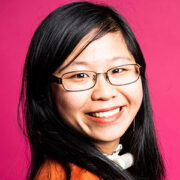
Wendy Lu, NF ’20
Wendy Lu, an editor and producer for HuffPost, examined the state of disability reporting and representation in the media. She developed a curriculum of professional reporting workshops designed to educate reporters on how to cover disability issues and train newsrooms to be more inclusive of disabled journalists, both in hiring and in overall workplace culture. | @wendyluwrites

Tomer Ovadia, NF ’20
Tomer Ovadia, a software engineer at Google, researched ways platforms like Google and Facebook can better identify and promote high-quality, original reporting and improve incentives for original content in the news ecosystem. | @tomerovadia

Amy Silverman, NF ’20
Amy Silverman, a freelance journalist and advisory board member of the National Center on Disability and Journalism, created a comprehensive guide for reporters, media outlets and journalism schools to better cover people with intellectual disabilities. | @amysilvermanaz

Elizabeth Toohey, NF ’20
Elizabeth Toohey, assistant professor of English at Queensborough Community College, City University of New York, developed an immersive journalism curriculum model for community colleges. Her work was part of a larger project to redesign college composition courses by basing them in media literacy. | @elizabethtoohey

Lewis Raven Wallace, NF ’20
Lewis Raven Wallace, a freelance journalist and co-founder and national program director of Press On, researched historical and current examples of movement journalism. Press On is a Southern collective for movement journalism, which focuses on liberation and racial justice issues. | @lewispants

Sarah Baird, NF ’19
Sarah Baird, a Kentucky-based freelance journalist and founder of Shoeleather, a directory of local reporters, explored how to build community and resource-sharing among independent journalists as a means of combating the negative impacts—both local and national—of parachute journalism across the United States. Her goal is to create a toolkit that will serve the community of freelance journalists working outside of traditional media centers. | @scbaird

Kabir Chibber, NF ’19
Kabir Chibber, most recently the business editor at Quartz, researched the sustainability of specialized email subscriptions as a driving force for readership and revenue in journalism.
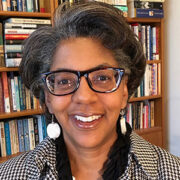
Karima Haynes, NF ’19
Karima Haynes, assistant professor at Bowie State University in Maryland, made progress toward a curriculum for high school journalists that focuses on cyberbullying as a media literacy issue. She worked on creating a guidebook for these journalists and their teachers and faculty advisers to identify and address cyberbullying on student-run news sites.| @Karima_Haynes

Heather Hendershot, NF ’19
Heather Hendershot, a film and media professor at MIT, examined TV coverage of the 1968 Chicago Democratic National Convention, focusing on Mayor Daley’s use of media during and after the convention. She explored how the notion of journalistic neutrality was challenged at the time and what lessons can be learned to better understand the contemporary news landscape and the current presidential administration’s inflammatory, divisive accusations of “fake news.” | @ProfHendershot

Emre Kizilkaya, NF ’19
Emre Kizilkaya, former executive editor for Hürriyet Daily News in Istanbul, conducted research on media sustainability. His plan is to develop an online platform for independent journalism in Turkey that will connect student journalists with senior reporters to collaborate on stories that will be selected and funded by local communities. This platform will be designed as a privacy-focused and decentralized news marketplace that will be scalable to expand to other countries. | @ekizilkaya
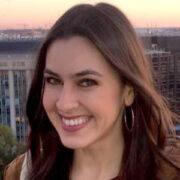
Taylor Lorenz, NF ’19
Taylor Lorenz, an internet culture reporter for The New York Times, studied how members of Generation Z create, consume and distribute news information on Instagram, including an in-depth survey of Instagram-native news accounts. | @taylorlorenz

P.E. Moskowitz, NF ’19
P.E. Moskowitz, co-founder of Study Hall, a media newsletter and online support platform for media workers, researched labor relations in the media and how digital communities can grow sustainably.| @_pem_pem

John D. Sutter, NF ’19
John D. Sutter, a senior investigative reporter for CNN, explored how journalists can better tell multigenerational stories, particularly those involving climate change. His research at the intersection of ecology, anthropology and technology will prepare him to launch “Baseline,” an online documentary project that aims to revisit climate hotspots over coming generations and compress those timelines into meaningful, human stories.| @jdsutter

Soutik Biswas, NF ’18
Soutik Biswas, India correspondent and features and analysis editor for BBC News, examined digital and non-digital methods and tools to counteract fake news in India. | @soutikBBC

Erik Borenstein, NF ’18
Erik Borenstein, director of strategy and development at The New York Times, explored the relationships between media companies and “stars” of the profession to identify approaches to growing audiences, deepening engagement, and meeting business objectives. He worked on developing best practices for news organizations and their employees. | @erikborenstein

Azad Essa, NF ’18
Azad Essa, a journalist with Al Jazeera and co-founder of the South African news portal The Daily Vox, investigated innovative and cost-effective ways in which online news sites can reach rural audiences in South Africa. | @azadessa

Mark Frankel, NF ’18
Mark Frankel, social media editor for BBC News in London, researched how journalists can best uncover and report on stories sourced from audiences on “dark social” apps, message boards and other private, invitation-only platforms. | @markfrankel29

Cynthia Hua, NF ’18
Cynthia Hua, a San Francisco-based freelance journalist who previously worked at Facebook and BuzzFeed, explored new approaches to measuring success for online video news, including using nuanced metrics that focus on intentional and repeated consumption patterns. | @cynthiaxhua

Shaheen Pasha, NF ’18
Shaheen Pasha, assistant professor at the University of Massachusetts Amherst, researched prison education programs across the country. She worked on creating an immersive teaching and reporting model for university journalism programs to partner with prisons in creating journalism curriculum for inmates. | @profpasha

Alexandra Smith, NF ’18
Alexandra Smith, growth director for WhereBy.Us, a platform that helps people connect and engage in their cities, researched how local newsrooms are using in-person events to build relationships within their communities. She worked on a guide for local newsrooms to use to understand the challenges and potential solutions around an events strategy. | @AlexandraLeighS

Ashley Catherine Woods, NF ’18
Ashley Catherine Woods, founder and CEO of Detour, a Detroit-based local news startup, examined financial models for local journalism based on the psychology and practices of influencer and relationship marketing. | @Ash_Detroit

Trushar Barot, NF ’17
Trushar Barot, London-based mobile editor for the BBC World Service, researched the rise of audio AI assistants and their role in helping news audiences—especially those new to the internet—find quality, relevant and timely content. He worked on producing a guide for news organizations to help them with AI assistant optimization of content.

Sandra Barrón Ramírez, NF ’17
Sandra Barrón Ramírez, product designer at Borde Político and Transparencia Mexicana, created a central data index for disappeared and missing people in Mexico. The platform is designed to be a tool for journalists, NGOs and families to verify cases and access information.

Malin Dahlberg, NF ’17
Malin Dahlberg, digital editor for SVT, Sweden’s largest TV network and public service company, developed a strategy for fact-checking services to better connect with their intended audiences. Her goal is to test the strategy during the Swedish national parliamentary election in 2018.

Lewis W. Diuguid, NF ’17
Lewis W. Diuguid, most recently a columnist and editorial board member at The Kansas City Star, examined diversity and equity in journalism. He also explored ways to encourage children to become lifelong news readers, thereby helping them to engage more deeply with their communities. Fellows in the Nieman class of 2017 selected Diuguid as winner of the Louis M. Lyons Award for Conscience and Integrity in Journalism.
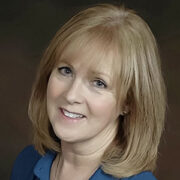
Jane Elizabeth, NF ’17
Jane Elizabeth, a senior manager at the American Press Institute, studied the characteristics of newsroom social media teams. She examined how they might evolve to become an integral part of accountability journalism by focusing their efforts on battling misinformation on social platforms and helping newsrooms to become a more valued source of reliable information.

Raheel Khursheed, NF ’17
Raheel Khursheed, head of news partnerships for India and Southeast Asia at Twitter, examined the feasibility and scalability of a micropayments news product/platform for premium and mass content.
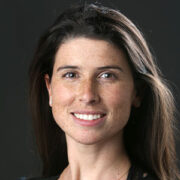
Nina Lassam, NF ’17
Nina Lassam, director of ad product at The New York Times, surveyed how news organizations can foster equal participation in comments and distributed news content, specifically looking for ways to encourage greater female engagement.

Nicholas Quah, NF ’17
Nicholas Quah, founder of Hot Pod, a newsletter about podcasts that appears on Nieman Lab and a consultant to the Democracy Fund, explored how podcasts can help strengthen the position of public radio stations in their local communities. He developed a guide to create audience-focused and financially sustainable local podcast strategies.
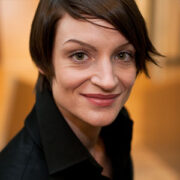
Stephanie Reuter, NF ’17
Stephanie Reuter, managing director of the Rudolf Augstein Foundation in Germany, researched how foundations can support quality journalism most effectively. She created a blueprint that helps foundations reform their funding practices to facilitate maximum impact.

Carlin Romano, NF ’17
Carlin Romano, critic-at-large for The Chronicle of Higher Education, worked to organize clinics for citizens who want to bring stories to the media’s attention. The project’s goal is to create a pro bono model, similar to that of the legal profession, that can be emulated in other communities.

Maya Baratz, NF ’16
Maya Baratz, former head of new products at Disney/ABC Television, experimented with new formats for nonfiction storytelling via text messaging. The goal of the project was to design a product that offers an immersive experience and takes advantage of the strengths of the medium.
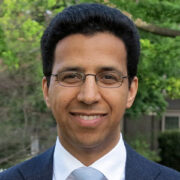
David Barboza, NF ’16
David Barboza, a reporter for The New York Times who served as Shanghai bureau chief, built new tools for investigative reporting in China, including a business and financial database of Chinese companies.
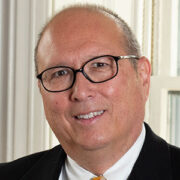
Bill Church, NF ’16
Bill Church, executive editor of the Sarasota Herald-Tribune and southeast regional editor of GateHouse Media, explored the organizational behavior of small newsrooms and examine new models for adaptability and innovation.

Fatemah Farag, NF ’16
Fatemah Farag, founder and CEO of Welad El Balad Media Services in Egypt, researched the relationship between community engagement and media production. Her goal was to define models for business development and sustainability for alternative media in Egypt and the Middle East.

Walter Frick, NF ’16
Walter Frick, a senior associate editor at Harvard Business Review, explored through research and prototyping how machine learning can help news organizations better organize background information and archival material in order to provide context for journalists and readers when news breaks.

Paul McNally, NF ’16
Paul McNally, a radio journalist for Wits Journalism and director of The Citizen Justice Network in South Africa, worked to develop an online tool to organize citizen journalism into a network for investigative reporting. The project was designed to blend traditional and digital strategies for the development of local stories.

An Xiao Mina, NF ’16
An Xiao Mina, director of product at Meedan, examined how language barriers affect global coverage. She also conducted a case study around a specific news event, with the goal of understanding and measuring the impact of translations and annotations of social media on diversifying and broadening reportage.

Tara Pixley, NF ’16
Tara Pixley, a freelance photojournalist and photo editor, identified structural challenges to finding and accessing images from photojournalists outside the Western media network.

Dean Haddock, NF ’15
Dean Haddock, director of digital and technical innovation at StoryCorps, designed a system for recording, editing and accessing user-generated interviews online that extends StoryCorps’ proven interview methodology to the Internet and mobile devices. The project offers new ways to produce high-quality, well-organized audio content that journalists, communities, families and the public at large can freely use and share. Read more

Melody Joy Kramer, NF ’15
Melody Joy Kramer, most recently an editor and digital strategist at NPR, developed a new model for public media membership to include non-financial forms of contributions and use of local stations’ physical space for community building. The goal of the project is to instill a sense of ownership and identity among listeners, allowing them to feel more connected to and invested in public media’s content, work and mission. Read more

Donna Pierce, NF ’15
Donna Pierce, a contributing editor at Upscale Magazine who writes about food in a syndicated column for the Chicago Defender, researched papers at the Harvard University Archives and elsewhere for a publishing project on the migration of African-American cooks and recipes from the American South to the Midwest, West and Northeast. She also worked on a companion project to teach journalistic skills to young people through interviews with senior citizens about their food traditions.

Jack Riley, NF ’15
Jack Riley, the London-based head of audience development at The Huffington Post UK, studied the future impact of smartwatches and wearable devices on journalism and content and the opportunities, risks, and challenges for publishers of news. His work included research, interviews, case studies and surveys about product potential and likely adoption, as well as monetization. Riley also worked on a prototype of a smartwatch publishing app. Read more

Freek Staps, NF ’15
Freek Staps, the head of the business news start-up NRC Q in the Netherlands, researched a set of issues related to journalism’s digital transformation, including leadership skills, newsroom buy-in and how content producers can work hand-in-hand with reader-oriented departments on the business side of media companies. He has identified best practices in the United States in order to introduce them to European markets. Learn more

Amy Webb, NF ’15
Founder and CEO of Webbmedia Group and co-founder of Spark Camp, Amy Webb spent her time at Harvard developing a program to reform journalism education by researching and publishing a blueprint that can be adapted within universities. Webb has developed seven key areas for change, as well as new metrics and key performance indicators to measure outcomes. Read her Nieman ebook “How to Make J-School Matter (Again).”

Taylor Goldenstein, NF ’14
Taylor Goldenstein, a graduate of the University of Illinois’s journalism program and now a data journalist at the Los Angeles Times, worked on plans for a website that will provide a forum for college journalists to converse and collaborate; offer advice from professional critics on topics ranging from reporting to app development; and showcase the front pages of participating college newspapers. Read more

Samar Padmaker Halarnkar, NF ’14
Samar Padmaker Halarnkar, a writer and former managing editor of the Hindustan Times, studied ways to build an inexpensive model for mobile phone-based public interest journalism in which journalists, non-journalistic organizations and readers can collaborate on investigations. Read more

Tina Pamintuan, NF ’14
Tina Pamintuan, the director of radio projects and initiatives at the CUNY Graduate School of Journalism, researched a plan for a mobile app that will enable ethnic radio stations across the United States to reach more audiences and share programming.

Allissa Richardson, NF ’14
Allissa Richardson is an assistant professor of journalism at Bowie State University. At Harvard, she developED a mobile journalism MOOC project, a free online educational resource that will teach veteran journalists, citizens and journalism students how to report news using only tablets, MP3 players or smartphones. Learn more

David Smydra, NF ’14
David Smydra, who works on Google’s news partnerships team, worked on developing an industry-wide method for organizing future news events into structured data that will be accessible via an open, collaborative calendar. Such a calendar will enable journalists and audiences to see beyond ephemeral daily news and better comprehend stories that have a lasting impact on their lives. Learn more

Daniel Eilemberg, NF ’13
Daniel Eilemberg, the founder and editor-in-chief of the Animal Político website, used his time at Harvard to build the site into a leading digital editorial company in Mexico. On campus, he worked in partnership with others to conceptualize and build the platforms, teams and tools needed to expand his organization’s digital newsroom, integrating the best technology and journalistic practices. Eilemberg now oversees digital projects at Fusion. He participated in the Nieman co-sponsored workshop “Latin America’s Media Innovators” in 2014. Read more

Hong Qu, NF ’13
Chief technology officer for Fusion, Hong Qu developed his Keepr application to help journalists and other users better follow stories on Twitter and sort fact from rumor. Keepr was put to the test in April 2013 during the Boston Marathon bombings when Hong used his algorithm to identify reliable information as events unfolded. Read more

Kate Smith, NF ’13
Kate Smith, a journalism professor at Edinburgh Napier University in Scotland, delved into the Ernest Hemingway and Martha Gellhorn archives in Boston to examine the writers’ war reporting, focusing on the role that moral truth and moral courage play in coverage of war. She conducted research using the Hemingway collection at the John F. Kennedy Presidential Library and Museum and the Gellhorn archive at the Howard Gotlieb Archival Research Center at Boston University.

Paul Salopek, NF ’12
Nieman’s inaugural visiting fellow, Paul Salopek used his time at Harvard to plan his epic seven-year Out of Eden reporting walk around the globe to trace the path of human migration and use storytelling and technology to test a new form of “slow journalism.” Salopek continues to collaborate with researchers at Harvard’s Graduate School of Education and Center for Geographic Analysis, and at the MIT’s Media Lab and Knight Science Journalism Program. Read more